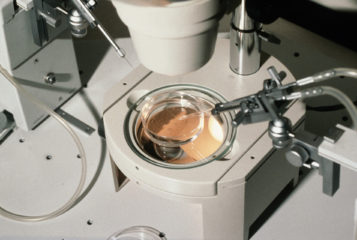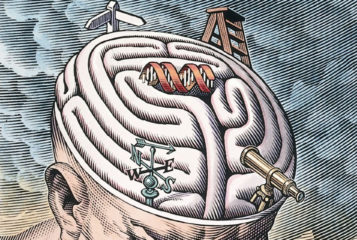Researchers have grown fully developed human eggs in the laboratory for the first time.
The team, led by Professor Evelyn Telfer at the University of Edinburgh, UK, was able to replicate the maturation process of human eggs outside the body. Previously, this had only been achieved using mouse eggs.
Starting with strips of ovarian tissue containing immature eggs, the scientists developed a method which combined a series of distinct steps each with a carefully designed cocktail of culture media. This generated mature eggs that are, in theory, capable of becoming fertilised embryos. While several of the culture steps had been optimised already, this is the first study of its kind to successfully link the whole process together.
Professor Telfer explains the discovery not only helps inform the understanding of how human eggs develop but could lead to new ways of preserving the fertility of women and children undergoing cancer treatment.
At present, freezing eggs or embryos prior to treatment represents the primary strategy for overcoming infertility in women undergoing chemotherapy or radiotherapy. For patients who require immediate cancer therapy or girls who have not yet gone through puberty, the process of egg retrieval is not an option.
In these cases ovary tissue can be taken instead and frozen for later reimplantation. This approach however poses the risk of reintroducing tissue contaminated with cancer cells back into the patient. The new technology offers way to isolate the eggs and grow them in the lab, bypassing the need to reimplant the tissue.
While an exciting scientific discovery, the current technique, published in the journal of Molecular Human Reproduction, has limitations and has received tough scrutiny from top experts in the field.
Eggs normally eject half their genetic material during the maturation process into a structure known as the polar body in preparation for fusion with the sperm. In the current study the polar bodies observed were unusually large, suggesting that the eggs had not developed normally.
A further concern was the lack of efficiency of the process. Only 10 percent of the eggs reached final maturity. The authors have also yet to test the developmental potential of the eggs by using them in IVF, which would test the viability of the eggs.
Speaking to the BBC, Professor Telfer said: 'It's very exciting to obtain proof of principle that it's possible to reach this stage in human tissue. But that has to be tempered by the whole lot of work needed to improve the culture conditions and test the quality of the oocytes.'
Independent experts agreed that further refinement will be necessary before the technique can be translated into therapy. 'This latest breakthrough is valuable, [but] significant further research is now needed to confirm that these eggs are healthy and functioning as they should do,' said Professor Helen Picton, professor of reproduction and early development at the University of Leeds, who was not involved in the study.
Professor Robin Lovell-Badge at the Francis Crick Institute in London agreed: 'While this work may contain an important step, many more will have to be taken to reach the destination.'
Sources and References
-
First human eggs grown in laboratory
-
These lab-grown human eggs could combat infertility–if they prove healthy
-
Breakthrough as human eggs developed in the lab for first time
-
Fertility 'breakthrough' as human eggs grown in lab for first time
-
Metaphase II oocytes from human unilaminar follicles grown in a multi-step culture system







Leave a Reply
You must be logged in to post a comment.